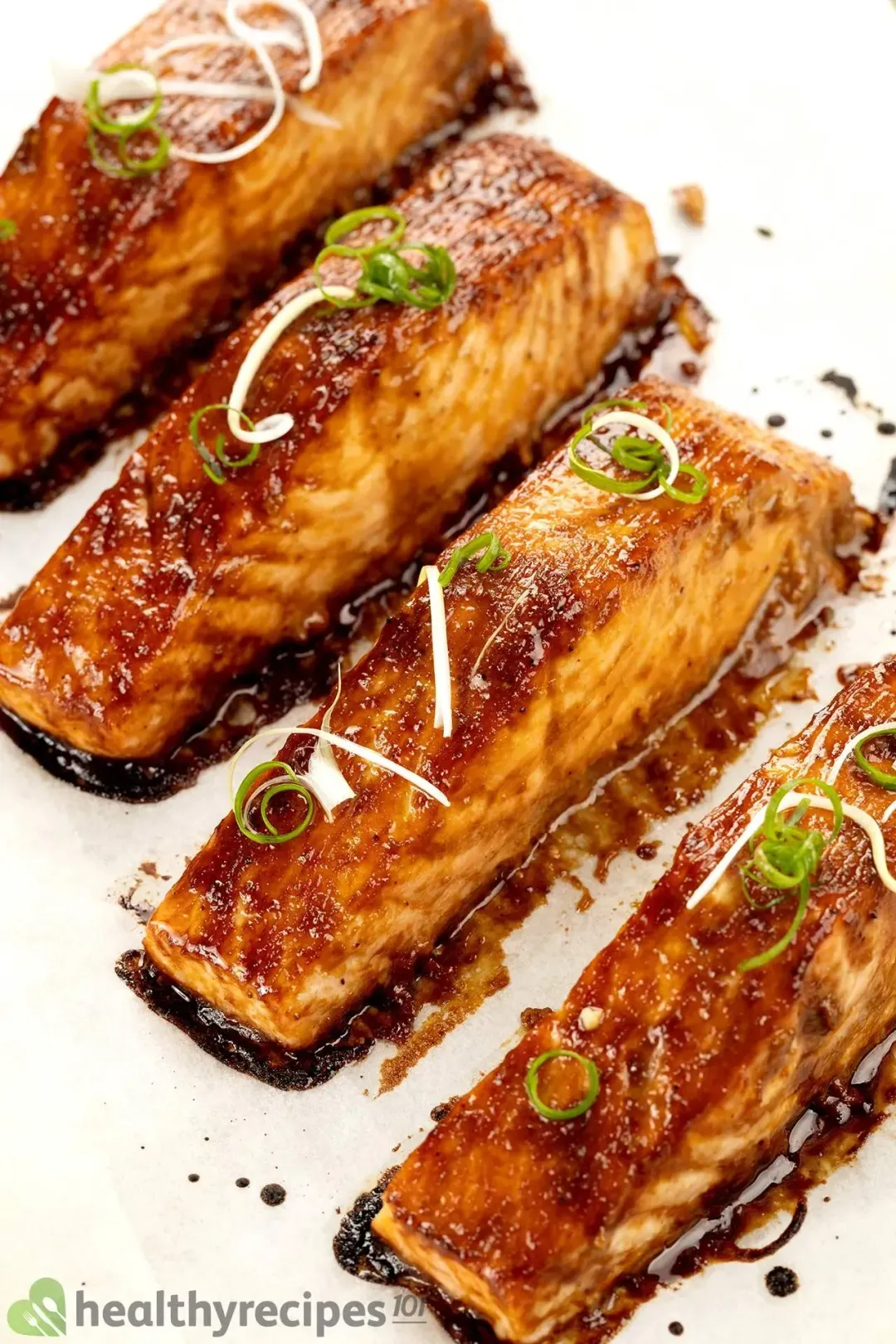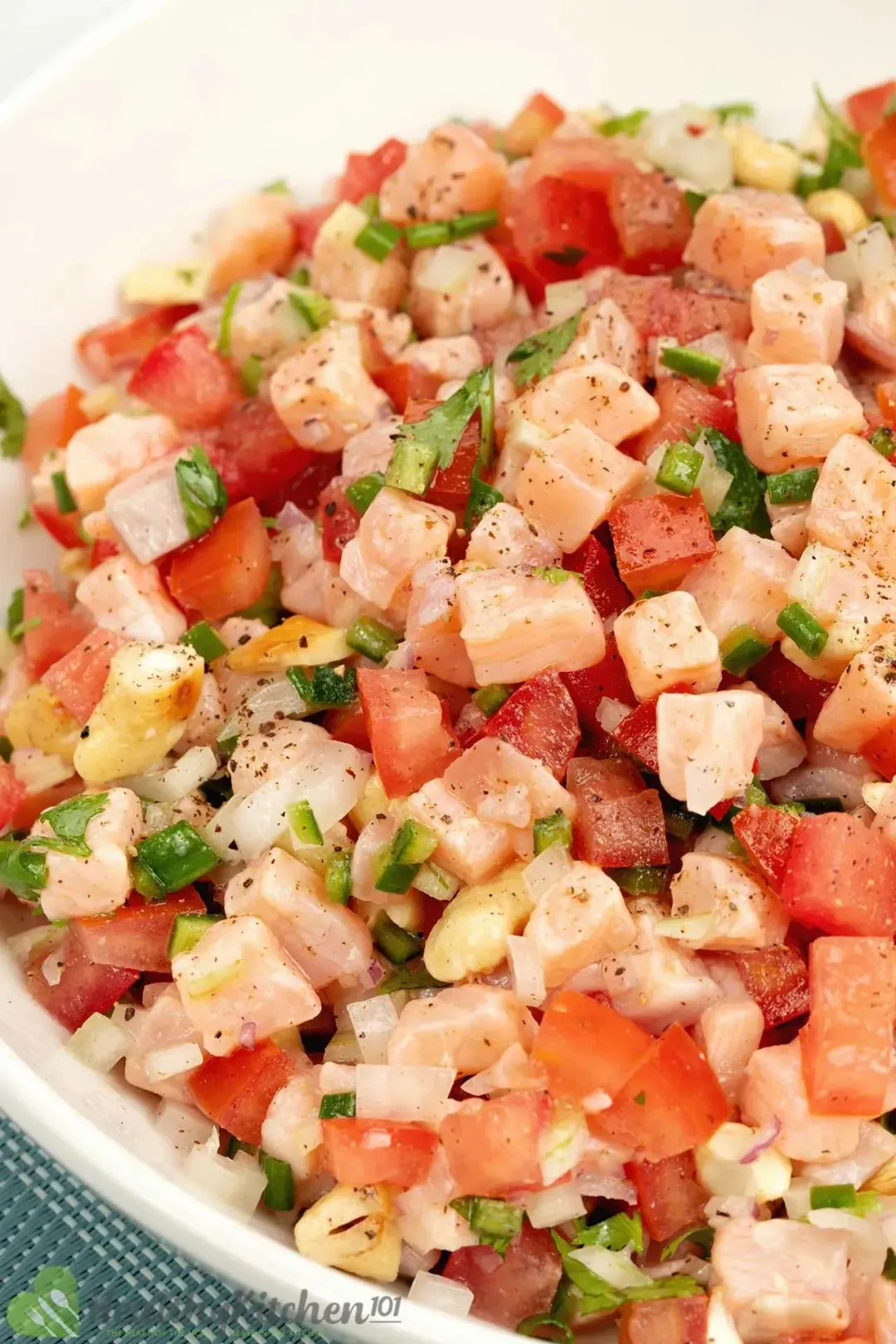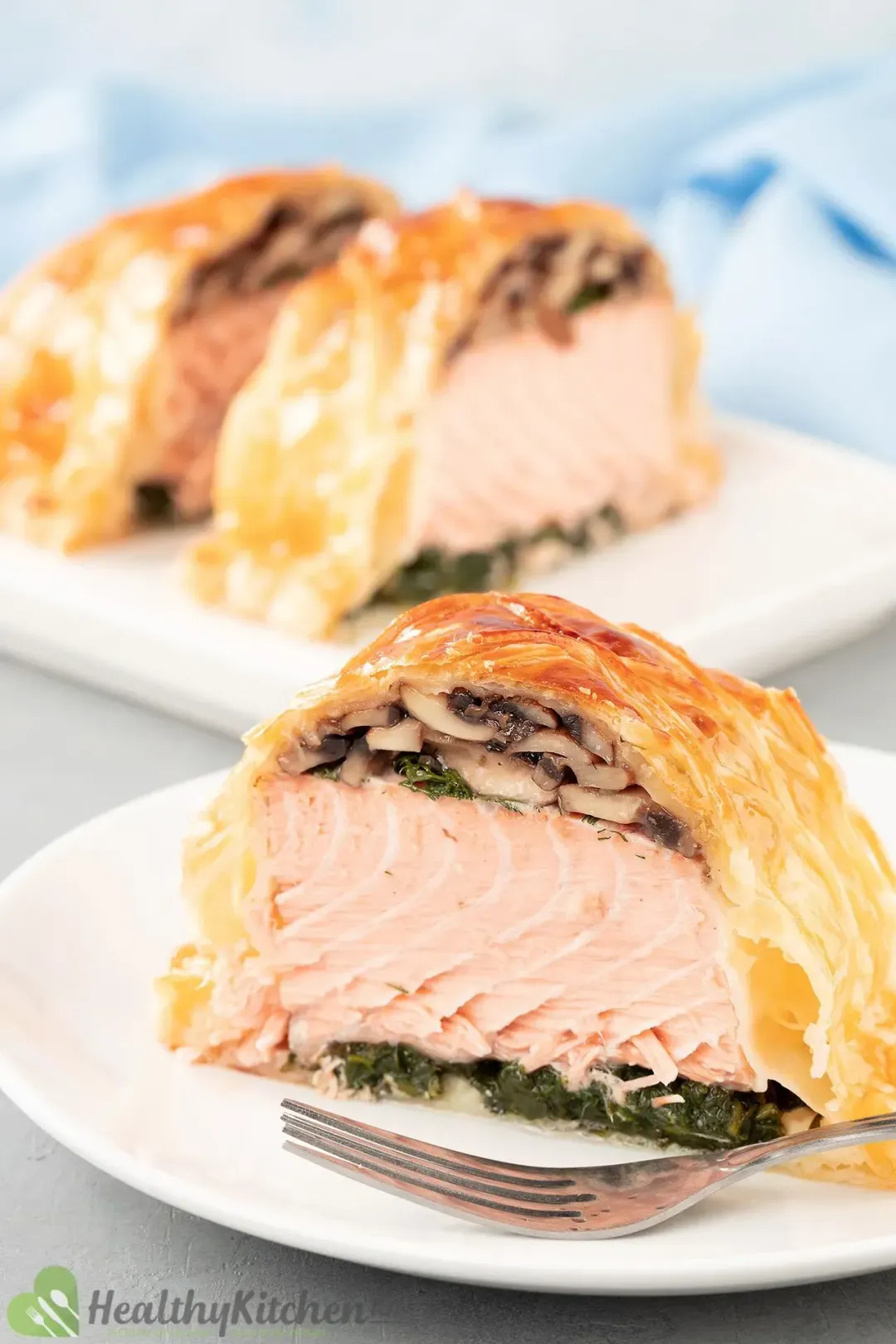Today’s miso salmon recipe is quick and straightforward. This recipe is great for a last-minute delectable weeknight dinner with minimal work.
What Is Miso?
Miso is a fermented soybean paste that has been a staple ingredient in Japanese cuisine since the 8th century.
To make the paste, people mix soybeans with salt and koji, a mold used in making sake. Koji acts like an enzyme by breaking-down proteins and carbohydrates, thus creating a thick paste that delights the palate with its umami taste.
Depending on ingredients and length of fermentation, miso paste can vary in color, texture, and flavor. White miso, or sweet miso, tends to taste sweeter due to the shorter fermentation time. Dark miso, which is fermented for a longer time, is saltier and more pungent in taste.
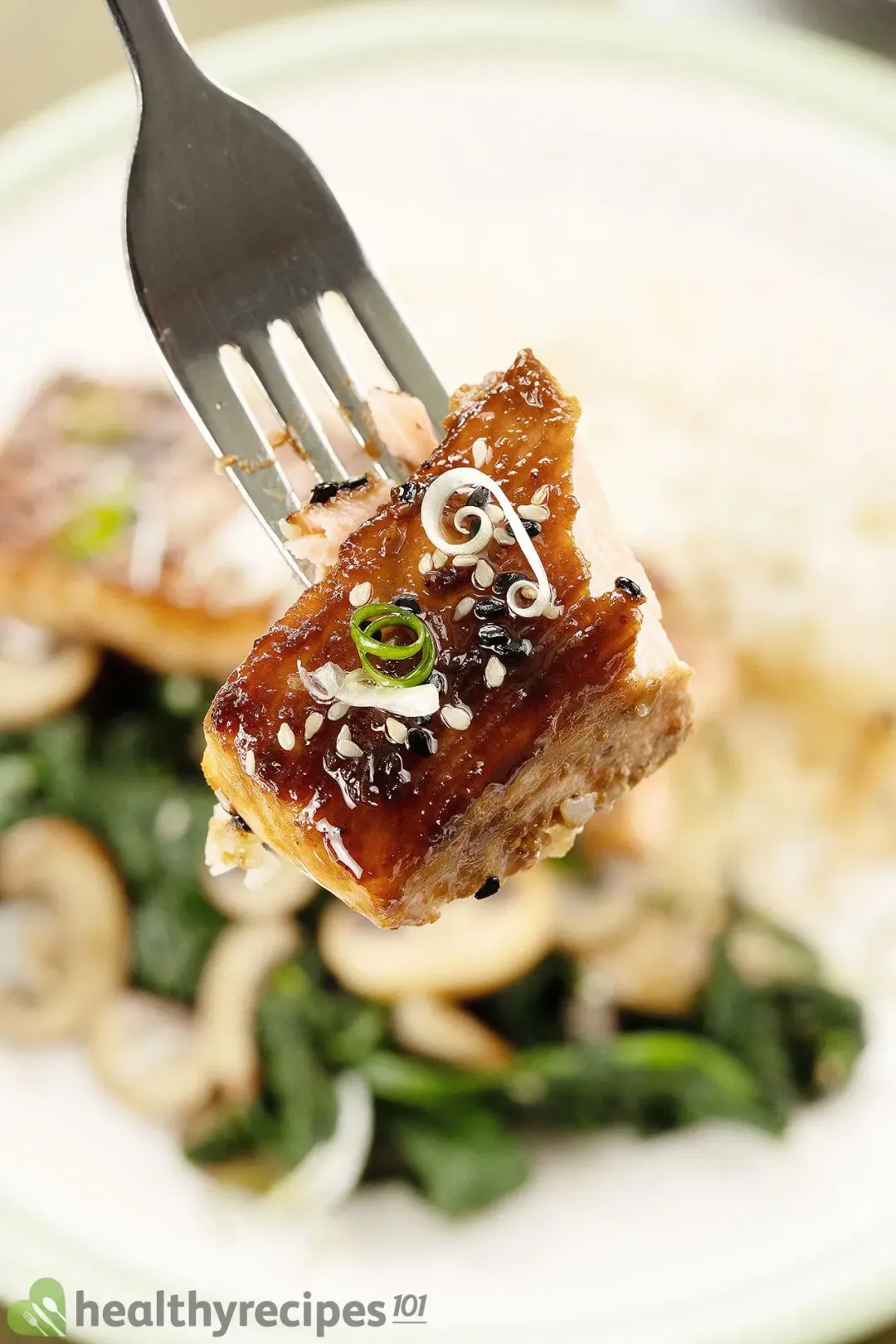
Different types of miso can be used interchangeably in most recipes, but the result will be a little different. A rule of thumb to keep in mind is the longer it ages, the darker and more complex in flavor the miso becomes.
Hence, light-colored miso is best for salad dressings, while dark miso works beautifully in braises and stews.
Miso Substitute
Not everyone always has good miso in the kitchen, especially if you don't cook Japanese dishes regularly. In case you need a substitute, here are some other ingredients that can come to the rescue.
- Soy sauce: Soy sauce is one of the most common substitutes because it has a similar umami kick. However, note that soy sauce is saltier and less creamy than miso. It also may darken your dish due to its dark brown color.
- Tahini: Tahini, created using ground sesame seeds, can work and make your dishes look the same way miso does. When it comes to the taste, you might be disappointed since the paste has a mild peanut butter taste.
- Tamari: Tamari is a liquid created during the process of making miso, so it’s texture differs from miso. Fortunately, tamari comes with a similar flavor profile that’s salty and umami.
But the tamari available in most stores contains excess salt, which can be a problem for those who are trying to limit their sodium intake.
Ingredients used as alternatives won’t be perfect, and that applies to all miso substitutes. However, you can consider using one of the suggested components to make a flavorful dish with characteristics close to the original miso.
Is This Miso Salmon Healthy?
Salmon is an excellent source of omega-3, an essential fat that our bodies can’t produce but have to absorb from food. Some of the most impressive benefits one can get from salmon include improved eyesight, cardiac and mental health.
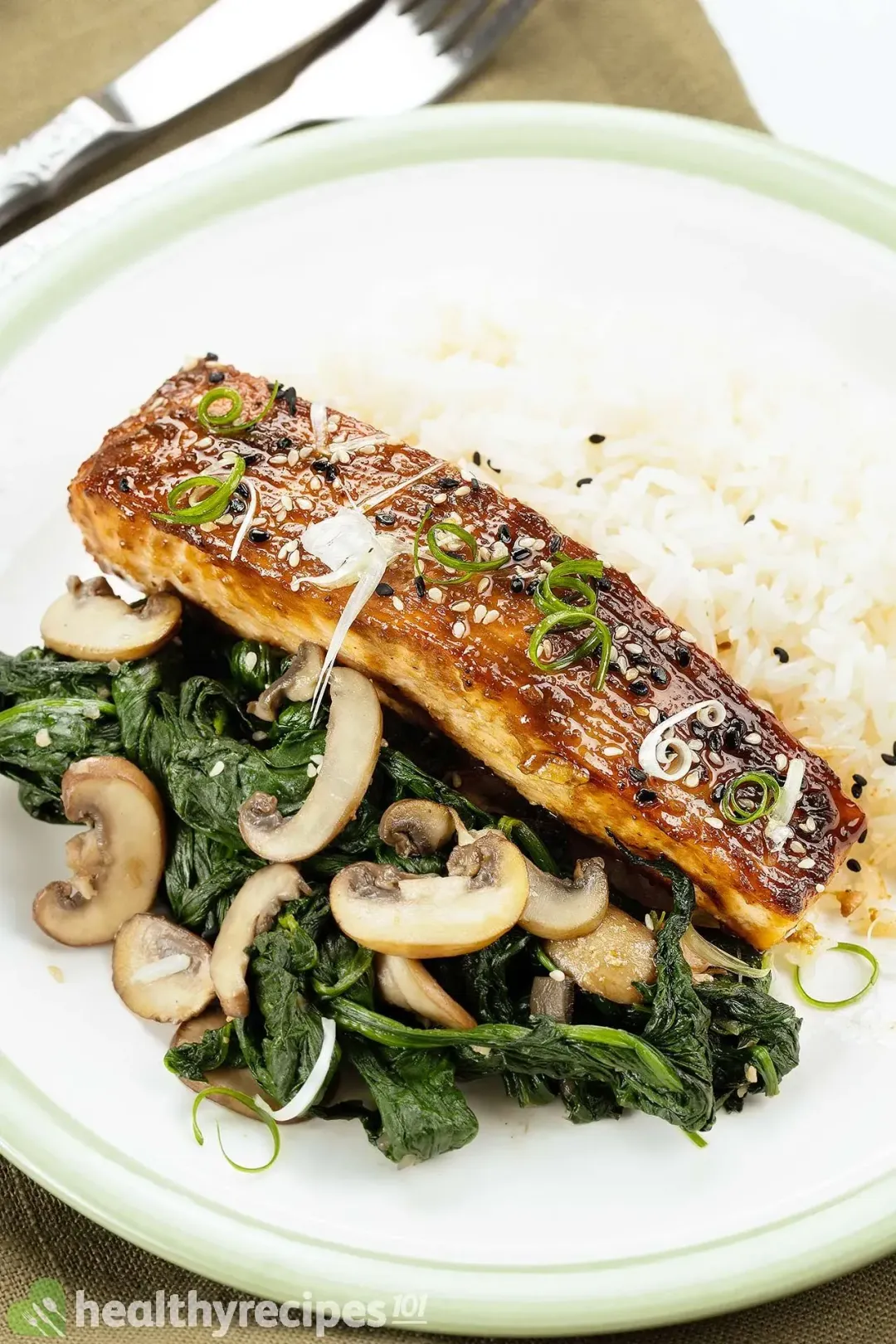
When it comes to baking dishes like miso salmon, the amount of saturated fat used for cooking is often a large concern. Foods high in saturated fat can raise cholesterol levels and increase one’s risk of disease.
Our goal is to create dishes that are healthy, yet tasty. For this miso salmon, we use only one tablespoon of butter to stir-fry vegetables. Each serving contains only 3.3 grams of saturated fat, 15% of the USDA daily recommendation.
Broil vs. Bake
Broil and bake both involve using an oven to heat your food. However, there are some notable differences in temperature and technique, which yield different results.
1. Broiling
Broiling involves cooking food on direct high heat, typically 500–550°F (260–288°C). Due to this high temperature, broiling is a much faster cooking method, and the food will brown perfectly.
In this method, the food is placed closer to the broiler at the top of your oven. You don’t control the oven’s temperature, but the distance between the broiler and the surface of your food.
2. Bake
When you bake food, hot air cooks it. Food is often placed in the oven’s middle rack with a temperature of around 325-375℉ (160-190℃).
The broiler’s heat slowly moves through the oven, which is why baking takes more time to cook than broiling.
Below we’ll explain how to make miso salmon.
Tips for Making
This recipe for miso salmon is simple, but there are some tricks that can help reduce the workload.
Salmon can be cooked either by baking or broiling. However, this method requires constant attention because one can easily overcook the salmon, and miso burns quickly as well.
If this is your first time trying an oven method, baking is better for first-timers. With the lower temperature, baking can preserve the moisture and delicate texture of the fish.
Another great thing about baking the fish is that you can use the waiting time to prepare a side dish or dessert. In this recipe, stir-fried vegetables are a side-dish made to complement the buttery, umami fillets and offer a healthy dose of vitamins and fiber.
This miso salmon is quite easy to pair with other dishes. Following are some easy and flavorful side-dishes that are perfect for a quick dinner.
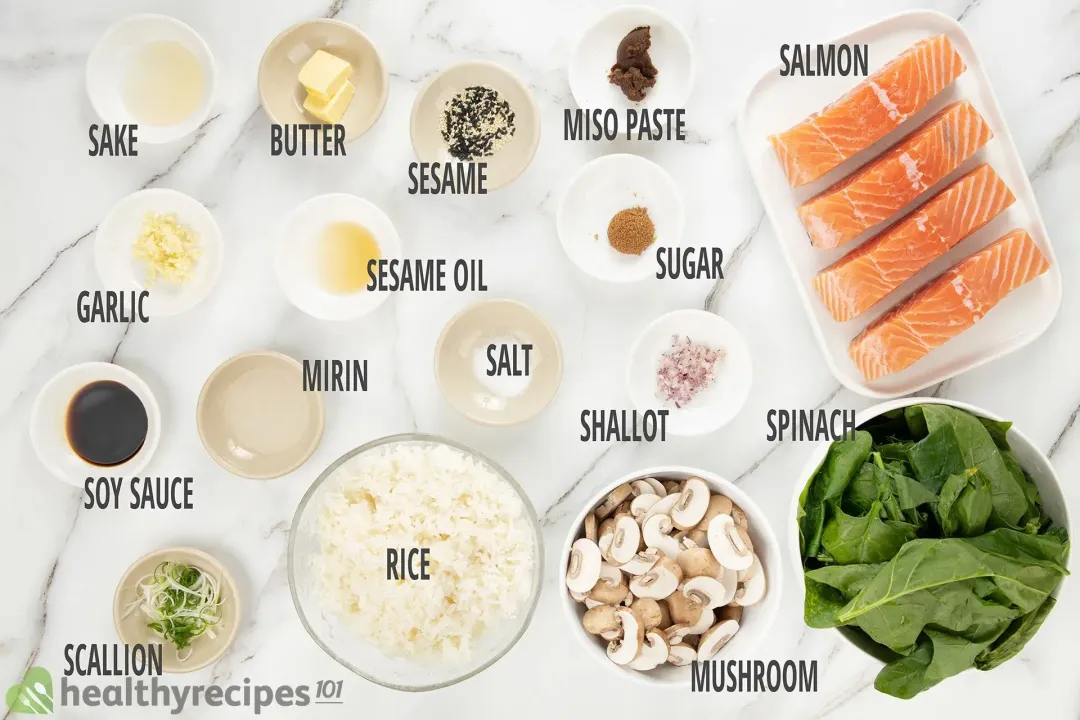
What to Serve with
1. Rice
Traditionally, miso salmon is served on a bed of hot steamed rice. Drizzle the rice with the leftover miso sauce.
This way, the rice absorbs the sauce and helps create a wide range of flavors, making the dish even more delicious.
2. Roasted Vegetables
The key here is to use veggies that cook quickly.
Broccoli and asparagus are some of our favorites since they pair excellently with fish. Drizzle a few tablespoons of olive oil onto the vegetable to create crispy oven-baked veggies that go well, with the caramelized fillets.
Serve the miso salmon with tempura and watermelon lime juice to balance out the meal and flavors.
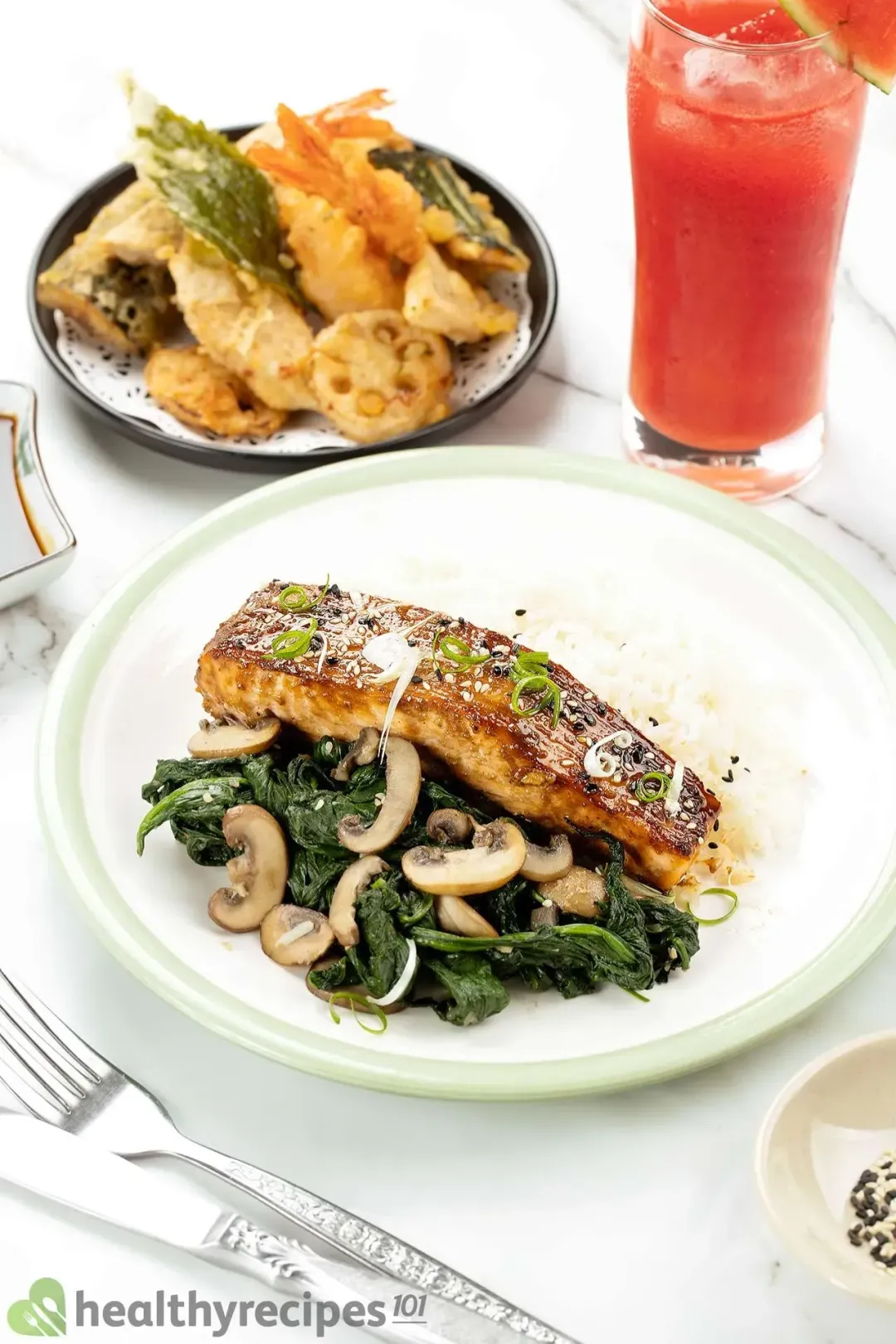
FAQ
1. Is Miso Spicy?
No, miso isn’t spicy. Typically, this Japanese paste has been described as salty, sweet, and earthy.
2. How Many Calories?
Each serving of this miso salmon recipe provides 498 calories — relatively low for a main dish with rice included. We paired the dish with soup and juice drink to make a complete meal.
3. Can You Freeze?
Cooked salmon can be frozen for up to 4-6 months, according to the USDA.
Note that the miso salmon can lose its tender, and succulent texture once reheated. We recommend consuming the dish soon after making it.
4. How Long Does It Last?
Miso Salmon lasts for a maximum of 3 days in the refrigerator, and 2 months in the freezer. To store the fish properly, cover it with plastic wrap or place it in an airtight container before placing it in the refrigerator.
If you're in the mood for some salmon dinner ideas, check out our Parmesan crusted salmon or honey mustard salmon. They’re also delectable and nutritionally balanced!
What Else Can You Make With Salmon?
Since we’re on the topic of salmon over rice, you may want to have a look at our salmon glaze recipes. It features similarly saucy salmon dishes served with cooked rice.
If you're a fan of that slight bitter aftertaste and grainy mouthfeel of ground spices, you might enjoy salmon curry too. The curry is made with coconut milk and herbs so it leans towards the fresh side, and it incorporates all sorts of flavors. It’s inspired by Thai cuisine, and we just love this fresh take on salmon.
Miso Salmon Recipe
This miso salmon recipe is for any food lover who likes maximum flavor with minimal effort. Umami-rich miso adds a deep layer to the fish, resulting in a wonderfully wholesome meal.
- cook TIME 25 mins
- prep TIME 5 mins
- total TIME 30 mins
- COURSE Main Course
- CUISINE Asian
- SERVINGS servings
- CALORIES 498 kcal
INGREDIENTS
- 20 oz boneless salmon fillets
- 10 oz spinach
- 6 oz cremini mushrooms (sliced)
- 1 tbsp sake
- 3/4 tbsp red miso paste
- 1/2 tbsp reduced sodium soy sauce
- 1 tbsp cooking mirin
- 1/2 tbsp brown sugar
- 1 tbsp unsalted butter
- 1 tsp sesame oil
- 1 tsp garlic (chopped)
- 1 tsp shallots (chopped)
- 1/4 tsp salt
- 1 tsp sesame seeds (black and white)
- 2 tbsp scallions (julienned)
- 3 1/2 cups cooked medium-grain rice
INSTRUCTIONS
Preheat the oven to 350℉.
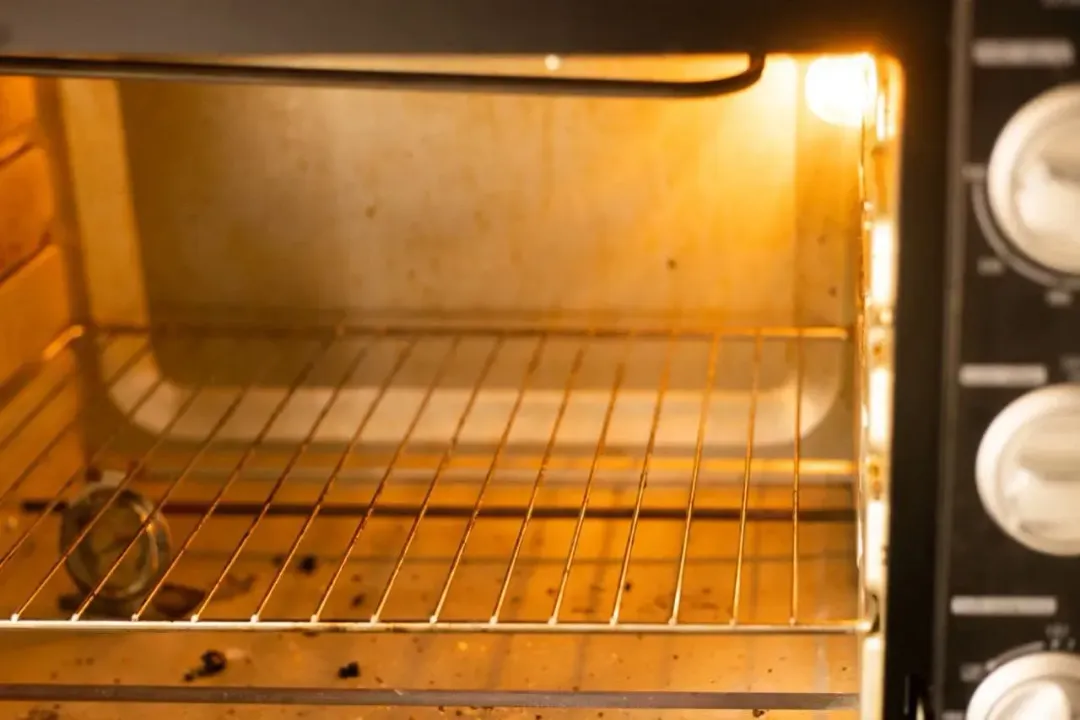
Make the sauce: In a small bowl, stir together 1 tbsp sake, 1 tsp sesame oil, 3/4 tbsp red miso paste, 1/2 tbsp low-sodium soy sauce, 1 tbsp cooking mirin, and 1/2 tbsp brown sugar. Use a spoon to whisk until the sugar dissolves.
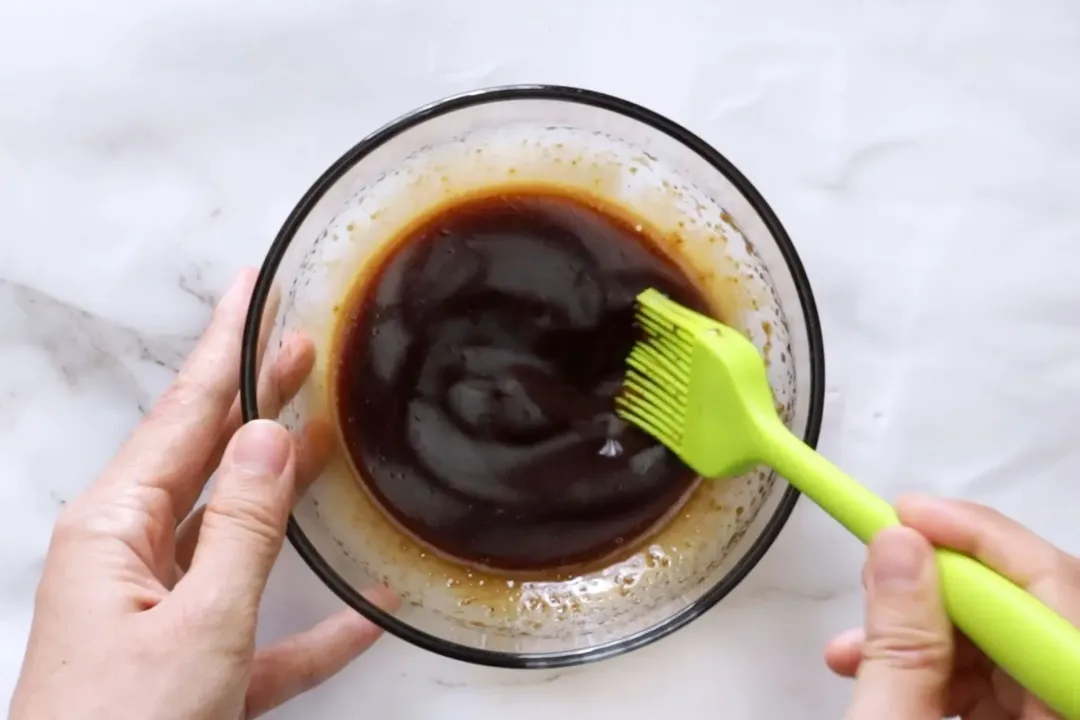
Place 20 oz boneless salmon fillets on a lined baking tray and glaze them with half of the sauce. Place the baking sheet on the middle rack of the oven and bake at 350℉ for 8 minutes.
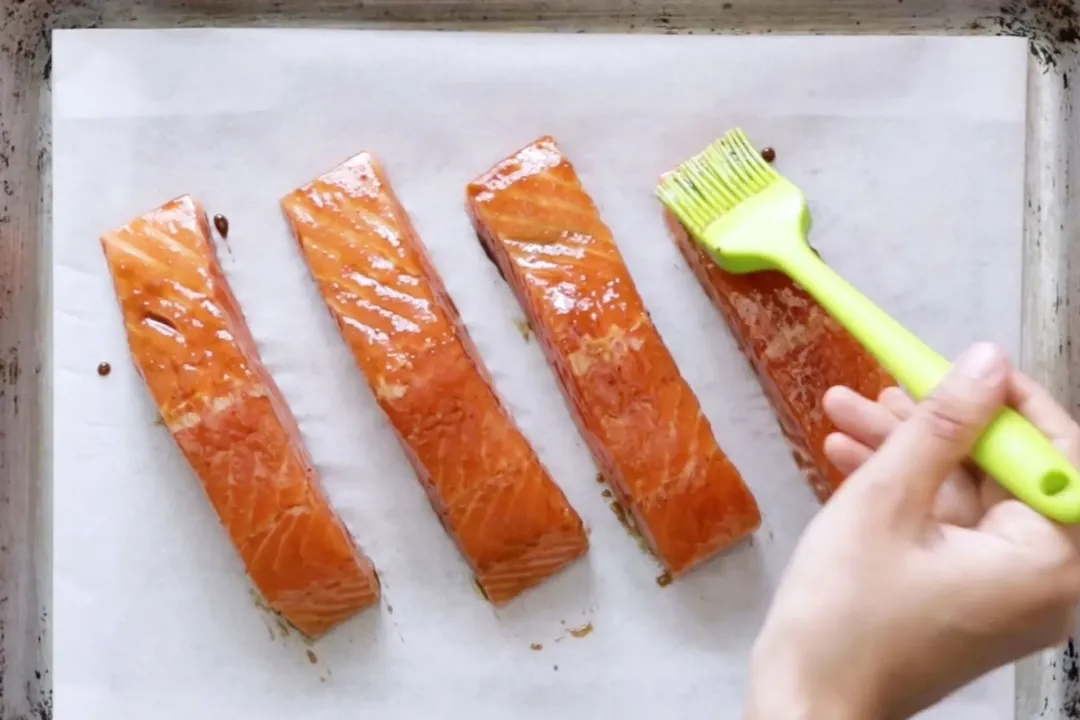
Remove the salmon from the oven and brush them with the remaining sauce. Place the baking tray on the top rack and bake for another 8 minutes.
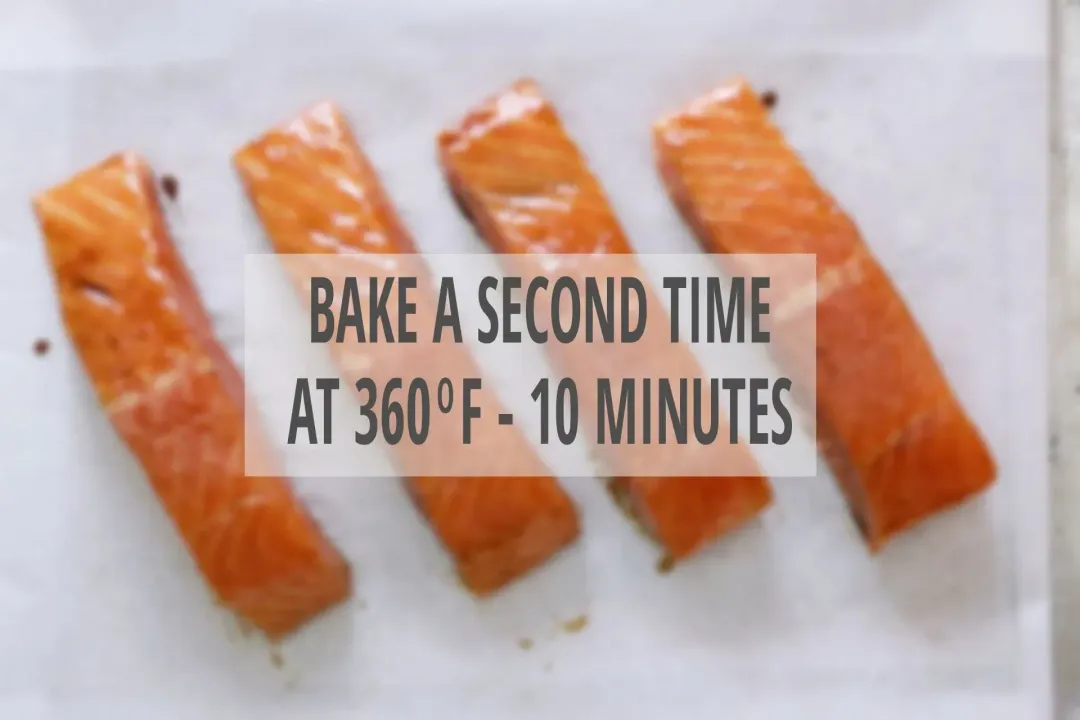
While the salmon is baking, boil 10 oz spinach in a saucepan. Then, soak the cooked spinach in ice and squeeze out the excess moisture.
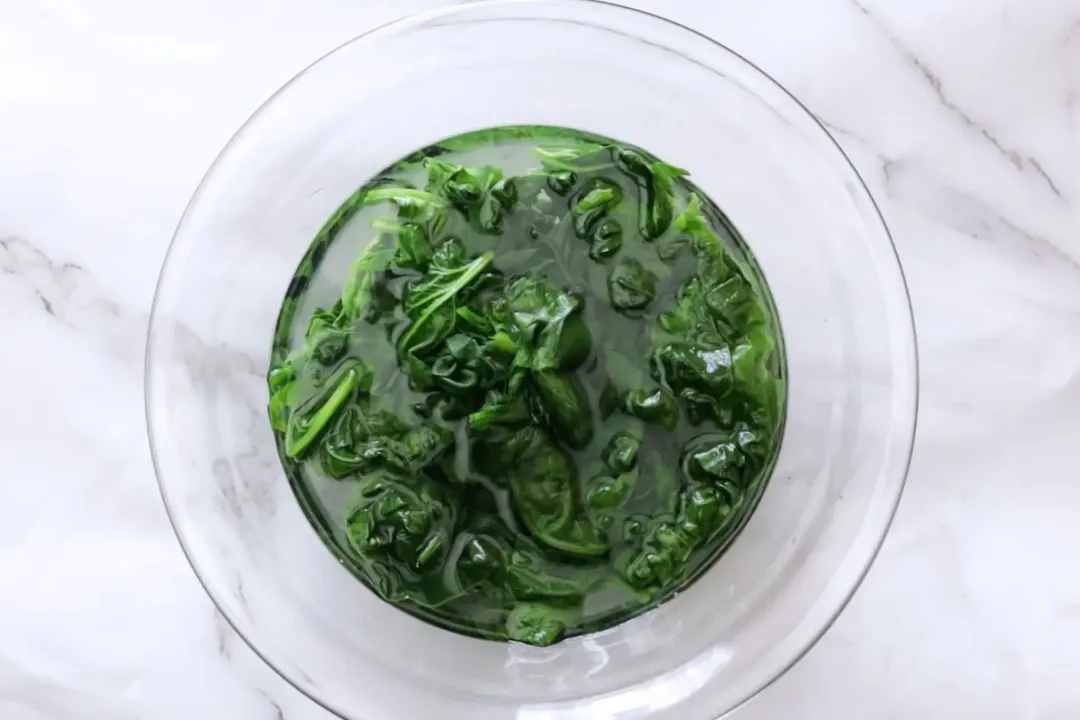
Melt the butter in a pan over medium heat. Add 1 tsp garlic and stir-fry until fragrant. Then, add 6 oz cremini mushrooms, spinach, and 1 tsp shallots to the pan. Season with 1/4 tsp salt.
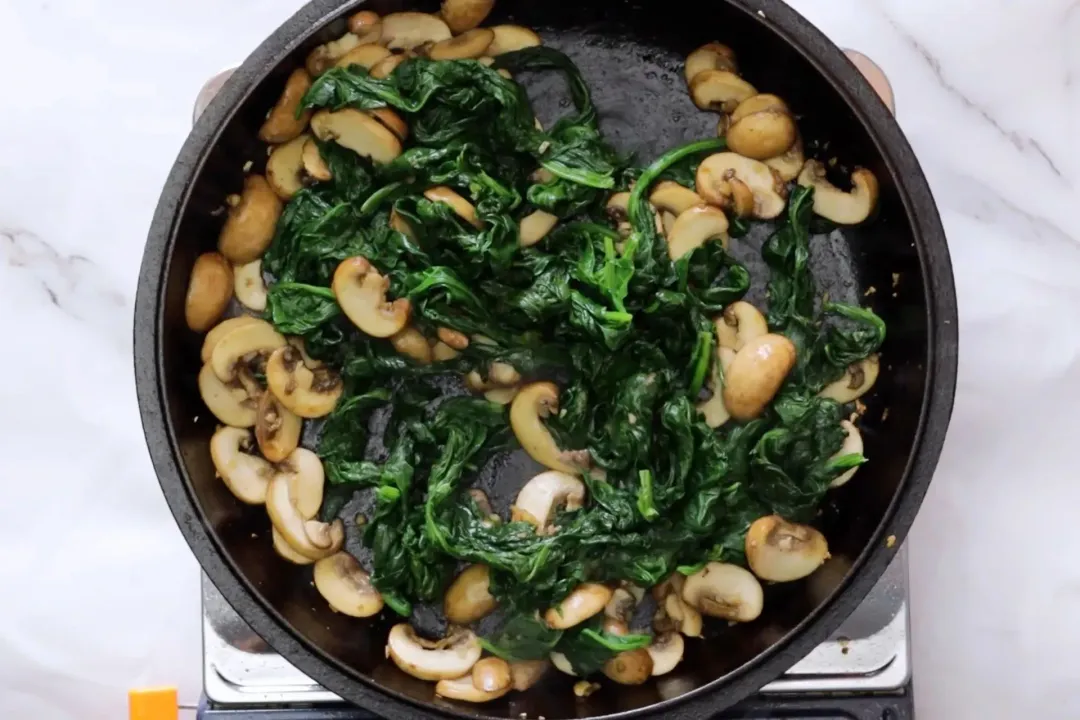
Transfer the salmon to serving plates. Sprinkle with 2 tbsp scallions and 1 tsp sesame seeds. Serve with hot steamed rice and stir-fried vegetables.
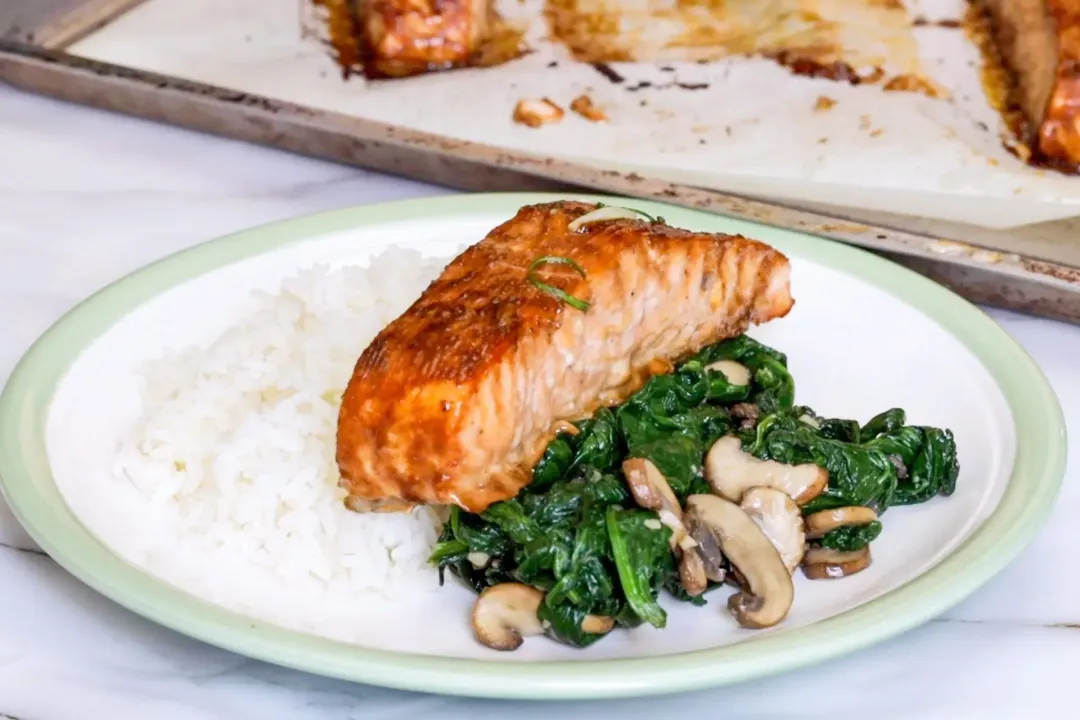
NUTRITION
Tuyet Pham
Head Chef, Culinary ConsultantLuna Regina
Writer, AuthorLizzie Streit, MS, RDN, LD
Nutrition Reviewer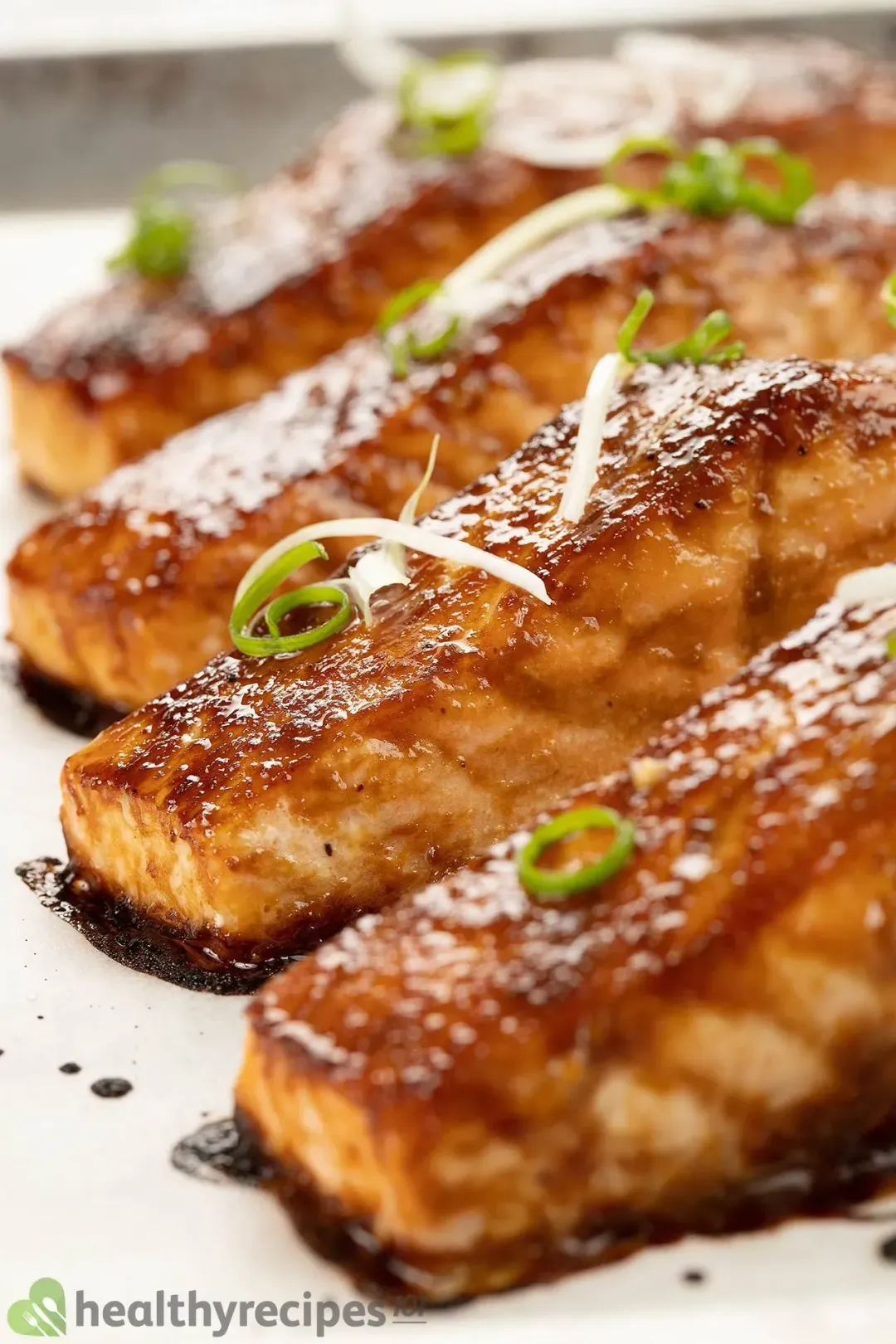
- Lizzi MMiso salmon is a savory and flavorful dish that's easy to make and healthy too.
